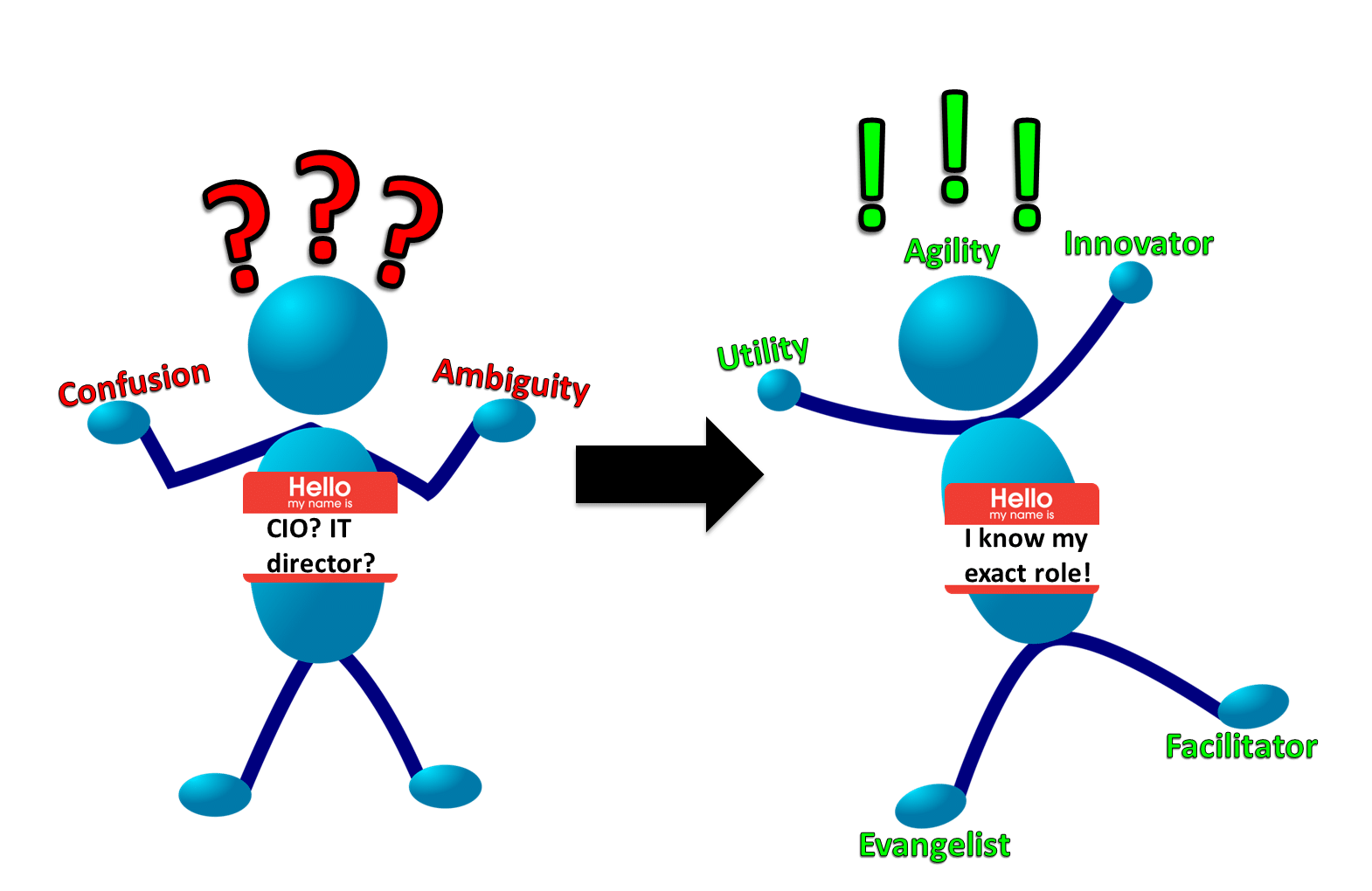What should CIOs do?
The definition of a chief information officer can be quoted as “a senior executive responsible for establishing corporate information policy, standards, and management control over all corporate information resources” (Peppard, et al., 2011). This definition, although appropriate for businesses wherein IT embodied more of a supporting role, is no longer appropriate for modern organisations in which IT has become an all-pervasive and indispensable part of business and corporate functioning. This outdated definition and outlook on the role of the CIO within an organisation has contributed to extensive ambiguity associated with the role within modern organisations. This hinders successes that may need to be achieved in the organisation and, often, the CIO will be blamed for shortcomings associated with IT and, consequently, business goals wanted to be achieved. To ensure the most effective and efficient functioning of a well-rounded IT organisation, the role of the CIO must be unravelled to dismiss confusion surrounding it, allowing it to become unambiguous and more beneficial to the organisation and its business counterpart.
Unraveling of the role requires intimate knowledge and awareness of the main causes associated with the ambiguity surrounding the role.. This is important because it ensures that confusion is dispensed and ensures that the renewed definition of the CIO’s responsibilities becomes specific and appropriate.
Along with the outdated definition mentioned previously, the following factors may be defined as causes for this confusion and ambiguity:
- An unclear distinction between corporate and business CIOs.
- Interchanged use of ‘IT Director’ and ‘CIO’ as job titles.
- Discrepancy between responsibilities and performance metrics.
- Outdated view of the CIO role by other players within the organisation e.g. CEO
When analysing research done regarding the role and its ambiguity, 2 factors were outlined as key elements needed to be focused on within the CIO’s functioning to combat the aforementioned causes of ambiguity. These include:
- The need for advocacy focussed on promoting a stronger and more proactive role for CIOs in their organisations.
- The need for exploration of the personal competency of successful CIOs.
Both factors promote the need for CIOs to employ a more strategic and innovative role within their organisations aimed to incorporate the role of a ‘business expert’ rather than just that of a ‘technical expert’. This means that successful CIO roles in modern organisations require the CIO to be a successful businessperson with appropriate communication skills, business acumen, and people skills. This ensures a shift in focus from the previously defined technology-oriented definition and role performance to a more well-rounded, appropriate, and less ambiguous definition for the modern, IT-pervaded organisation.
To ensure this shift from the traditional, IT-oriented role to the more business-oriented role, intersections between the IT and business sectors within the organisation must be examined. These intersections should be the primary focus of the role, creating a bridge-like role ensuring effective and efficient communication between the IT and business sectors as well as a well-defined, unambiguous role for the CIO. In simple terms: the core IT performance must align with the core business priorities, and this is done by creating a functional, bridging role for the CIO. This relationship is displayed in the table below:

Table 1: The CIOs core business priorities
Further research also shows more subtle nuances that affect the role of the CIO within the organisation. Understanding these nuances and the specific areas in which they present themselves also assists in creating a more unambiguous, efficient role for them. In literature, these nuances have been incorporated into 5 different CIO role types, listed below:
- Utility IT Director
- Evangelist CIO
- Innovator CIO
- Facilitator CIO
- Agility IT Director/CIO
For the purpose of this lecture, the Utility IT Director, Innovator CIO, and Agility IT Director/CIO roles and their differences will be focused on. These roles have been summarised in the table below:

As can be seen in the table above, incorporating these nuances with the defined factors to reach a newly-defined CIO role allows for the creation of roles that are precise and well-rounded. This decreases the ambiguity tremendously, allowing each CIO to be fully aware of their responsibilities within their organisation. This also creates an environment in which the goals and expectations within the organisation can be used as a deciding factor for determining which of these roles are most appropriate for the organisation and its specific requirements. The end result is an organisation with an unambiguous, clearly defined, and properly functioning CIO role.

Conclusion
The role of CIOs within modern IT organisations must shift from the traditional, IT expert-oriented role to a newly defined, well-rounded role in which they become more business-oriented in order to create a bridging role between IT performance and business priorities. This shift will ensure that any ambiguity and confusion surrounding the role is dispensed with and that their role becomes well-rounded, well-defined, and an efficient contributor to the success of the IT organisation and its business counterpart.
Resources
Peppard, J., Edwards, C. & Lambert, R., 2011. Clarifying the Ambiguous Role of the CIO. MIS Quarterly Executive, 10(1), pp. 31-44.
Bloch, M., & Hoyoz-Gomez, A. (2009). How CIOs should think about business value. McKinsey on Business Technology, 28-37.
The CIO Magazine
What is next
Previous Post |
Next post |
IT Strategy |
Delivery Methodologies: DevOps and Scrum |
For all our Modern IT Management Lectures.
For all our Podcasts.
